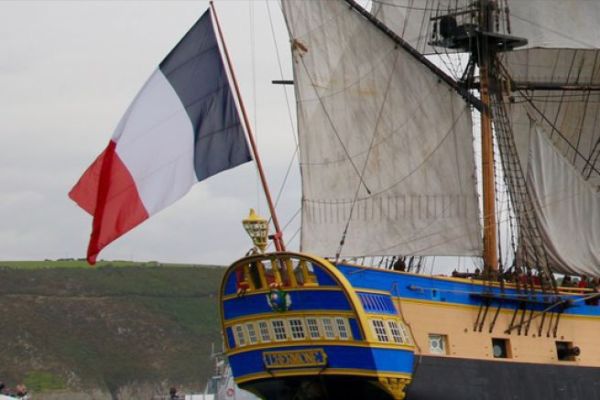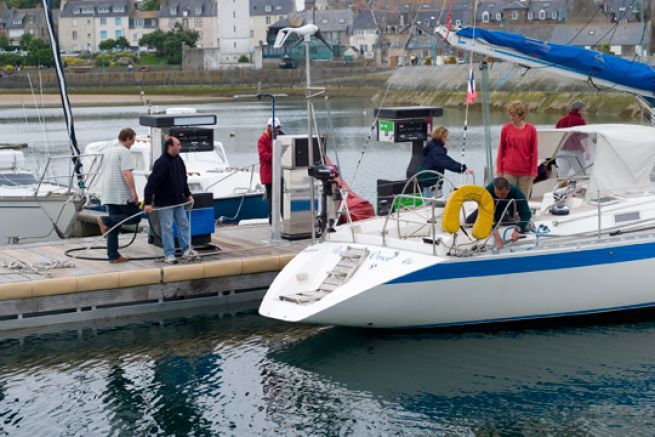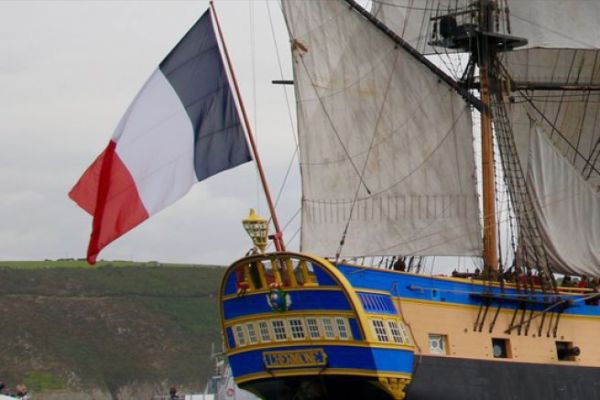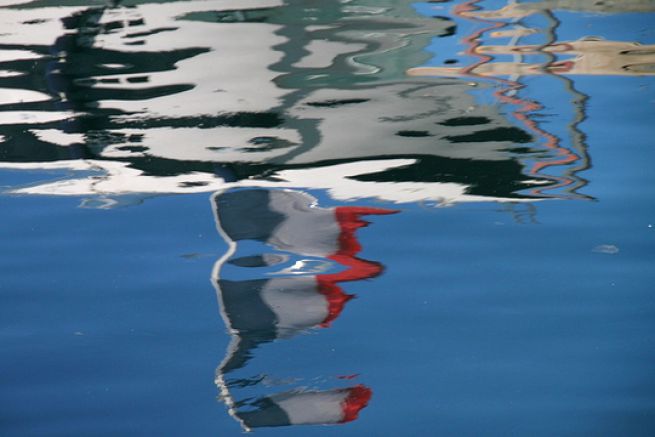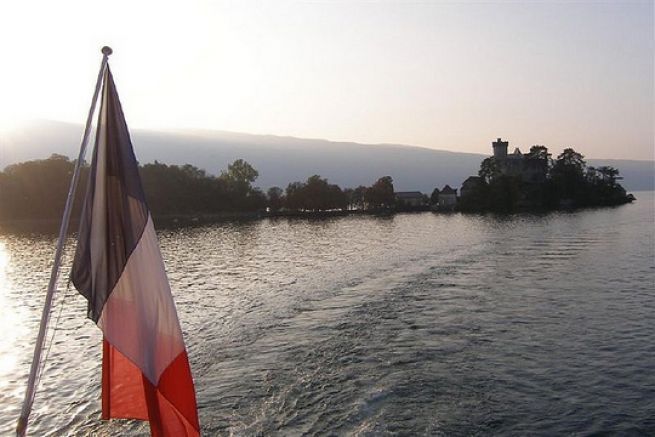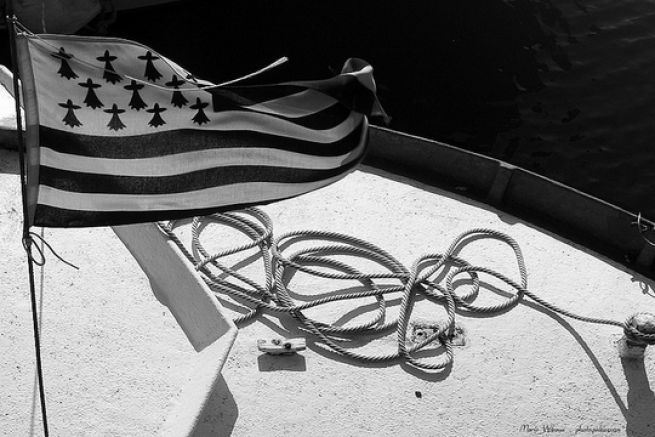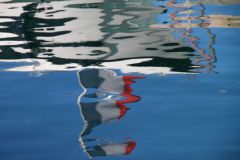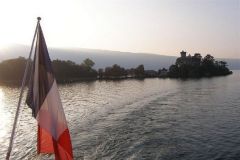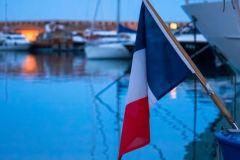For all lovers of the traditional navy, there is a maritime culture that requires respect for a certain ethic. Without being up to the point, it is interesting to know her so as not to offend the sensibilities of the foreigners met.
On the lexicon side, there is no flag on board. Only pavilions are used.
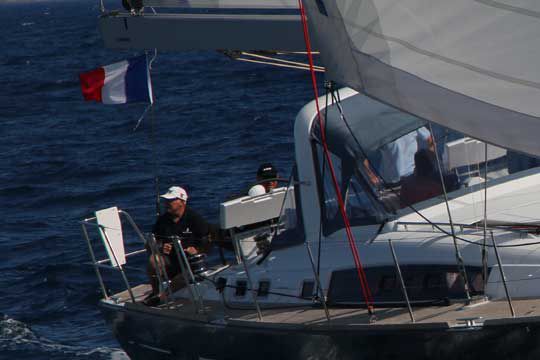
Some rules of the maritime code
- A flag is always hoisted up at the top of the halyard
- We never installed two pavilions on the same halyard. Only the flags of the"international code of signals" may be superimposed to signify a message.
- If the crew has left the ship entirely, all flags should normally be lowered. Is it a trick to avoid theft?
The national pavilion

This pavilion is also called"the colors". It serves to identify the nationality of the ship. It is the largest of all the pavilions, but also the one that is mandatory. Its size is often proportional to the ship. He sends everything to the back of the boat on a pole. Often by default, it is positioned on the backstay of sailboats.
The French flag consists of 3 bands which are not all of equal width: blue 30%, white 33%, red 37%. This is to give the impression of having three equal bands when the flag is flying in the wind.
Out of respect for one's country and the countries visited, one tries to keep a flag in good condition.

The clubhouse
This is your clubhouse, also known as the club handlebars. By default it is installed at the highest point of your boat. On traditional sailing ships, they would settle at the top of the mast. With the appearance of the many antennas that now occupy the mast of sailboats, this handlebar tends to descend under the spreaders.
The Courtesy Pavilion

Out of respect for the country one is visiting, one sends a flag of the country one is visiting to its starboard spreaders (the foremost mast). This flag is compulsory and installed as soon as one enters the territorial waters of the country in question.
Smaller than the national pavilion, courtesy requires that it be worn from sunrise to sunset and from 8am to 8pm once in port.
The demand pavilion for free circulation
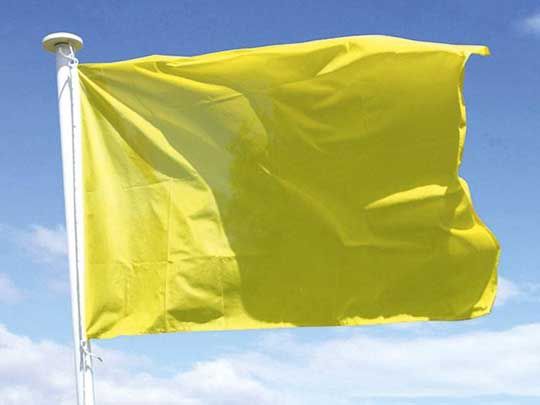
It is the Q flag (in memory of the time when ships remained in Quarantine). This flag is flying into the port spreaders. It indicates that you are requesting the right to enter and dock in the waters where the country of arrival is. You must then travel to the customs offices to complete the formalities.
Since the creation of the European Union, this practice no longer exists in Europe, but remains valid in the other countries. Once the formalities are completed, the flag is lowered
The owner's pavilion
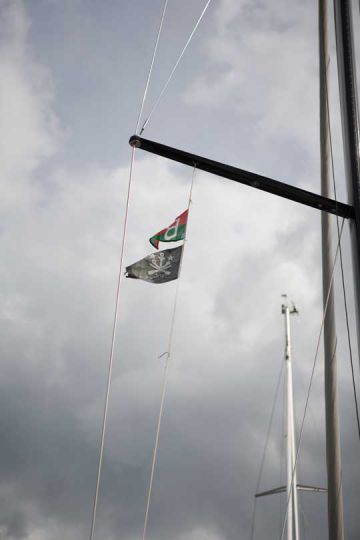
This pavilion is free. You can create it as you wish. It sends itself under the starboard spreaders (unless it is used, in which case it sends itself to port). Once sent, it means that the owner is on board
The grand-pavois
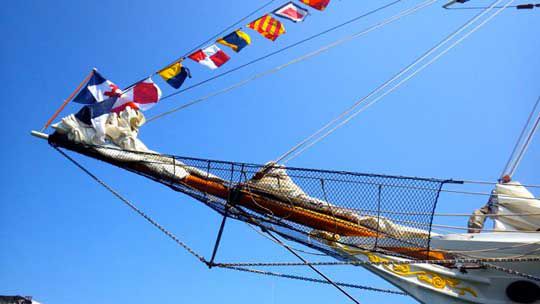
It is a matter of sending all the flags of the"International Code of Signals" on a single halyard running from the bow to the stern of the boat via the masthead. It is then a matter of decorating the boat for special occasions (receptions, parties, ceremonies...).

 /
/ 